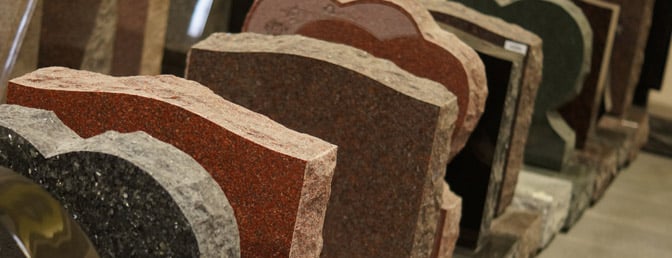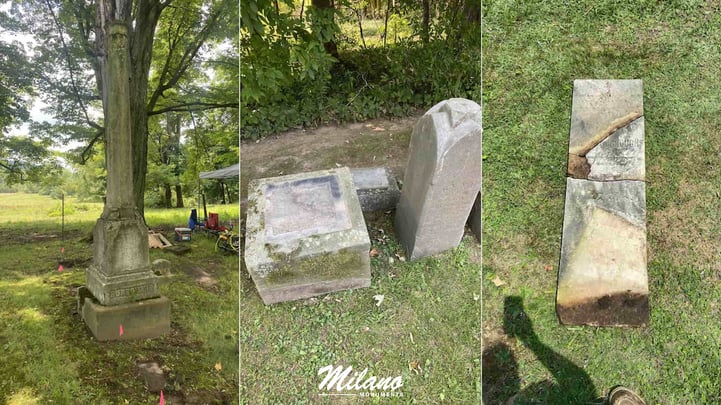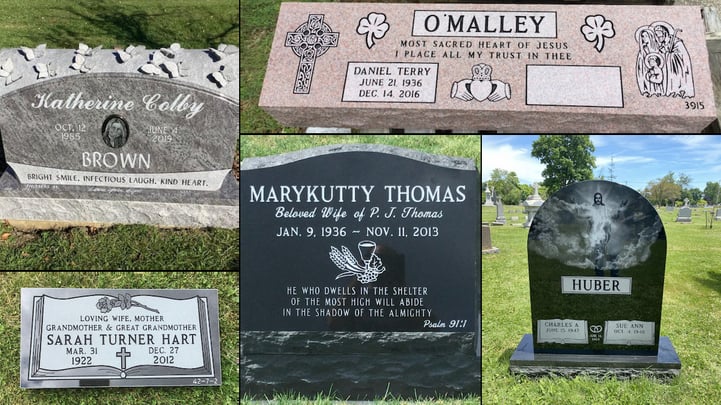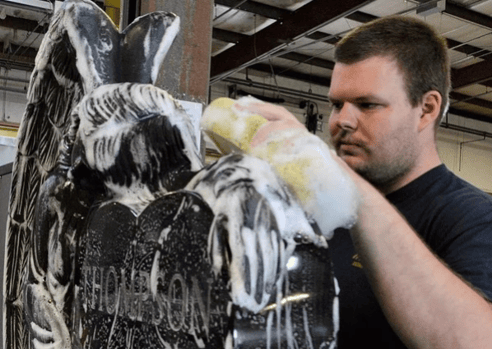When it comes to designing a headstone, some families first think of the memorial's shape or lettering style, while others may think of a color or symbol that best represents their loved one.
Although all are equally valuable elements of a headstone design, as they’re what make the memorial unique to your loved one, there is one important consideration many forget about: headstone material.
In the past, monuments and memorials have been made from marble, slate and limestone. Now, nearly the entire monument industry uses granite because of its durability—it doesn’t naturally deteriorate even 1/1000th of an inch over 1000 years.
So, what makes granite so durable? Read on to find out why granite is the ideal material for headstones. Then learn some maintenance tips to keep it looking good as new for generations to come.
What Makes Granite Headstones So Durable?
Granite is a broad category of stone that is available in a variety of colors. It isn’t made by people or machines, but by geological processes in the Earth that span over thousands or millions of years after molten rock has cooled. For this reason, granite is the most durable headstone material.

But despite its natural strength, not all granite is the same in terms of reliability. Grade is the term used to signify granite quality, and it reflects:
- Durability.
- Density.
- Structural integrity.
- Consistency.
- Suitability for cutting, crafting and finishing.
Low commercial grade granite is prone to chipping, degradation and discoloration over time. Craftspeople will have difficulty engraving or etching details into low-grade granite. The low density, flaws and inconsistencies in poor granite diminishes the material’s sharpness and pristine appearance when cut or polished.
Ask your memorial provider about their granite grade or quality, or ask if they have a warranty. Providers that offer a warranty on their memorials back up their words with a commitment to you and confidence in their granite.
How Granite Headstones Resist Weathering
Weathering is the breakdown of rocks to form sediment. There are three ways stones deteriorate:
- Physical weathering is when the stone deteriorates due to natural processes like abrasion, frost and ice splitting.
- Chemical weathering happens when the stone interacts with air, acids and water.
- Biological weathering is the weakening and ensuing breakdown of a stone by plants, animals and microbes.

Different rock types weather at different rates. Igneous rock, like granite, weathers especially slowly because it is hard for water to penetrate. Other types of rock, such as marble, are easily weathered because they dissolve in weak acids, like water.
Without question, granite has become the staple headstone material. It is accepted by almost all cemeteries, and will last for generations to come.

Granite Headstone Prices
There are several factors that influence the cost of granite headstones such as available inventory, your timeline, budget and chosen memorial provider. Keep in mind that high-grade granite is naturally more expensive—especially depending on the granite color you choose:
- Standard varieties. Falling on the more affordable end of the spectrum, this category encompasses headstone options such as Barre Gray, Mountain Rose, Dakota Mahogany and Canadian Mahogany. These colors are widely available and commonly chosen.
- Relatively unique varieties. Positioned between standard and rare options in terms of cost, colors including Bahama Blue, Paradiso, India Red, Erin Green, Impala Black, Ebony Mist, Coffee Brown, Brown Cats Eye, Red Cats Eye, Cathedral Red, Bethal White, Coral Rose and Pearl White, present a blend of distinctiveness and affordability. They offer a touch of individuality without reaching the price range of the rarest selections.
- Exquisite and rare varieties. Standing out for their exceptional beauty, these colors command a higher price point. Aurora Red, Galaxy Black, Blue Pearl, Sapphire Blue and Colonial Rose are examples of such rare options. These unique hues come at a premium due to their scarcity and unparalleled aesthetic appeal.
.jpg?width=586&height=440&name=MM_Granite%20Color%20Grid%20-%202023%20(with%20Tan%20Brown).jpg)
The advantage of superb granite can be seen from the start and is especially recognized in the decades and centuries to come. Other elements to consider in your budget are the size and shape of the headstone and customizations like etchings and engravings.
>>> Related Resource: How Does a Memorial’s Size and Shape Impact the Cost?
Tips for Granite Headstone Maintenance
Although high-quality granite is incredibly durable, hard irrigation water, tree sap, birds, grass clippings and other naturally occurring situations can stain the headstone or lessen the contrast of lettering and designs. Simple cleaning from time to time can help the headstone maintain its original beauty.

Here are easy cleaning steps you can use to ensure your loved one’s headstone maintains a consistent look over time:
- Choose high-quality granite.
- Clean the memorial with clean water.
- Do not use a pressure washer.
- Do not use any soap or other chemicals.
- Get the monument thoroughly wet before cleaning.
- Use a sponge or a fiber or soft brush, not a wire brush.
- Start cleaning at the bottom with just water, then work your way up to the top.
- Rinse thoroughly with more clean water.
- Do not let the monument dry until you are finished rinsing.
Some monuments will require more than one cleaning depending on how stained or dirty it is. Should you need a more effective cleaning, please see your local memorial specialist for further advice or assistance.
>>> Related Resource: 5 Signs It's Time to Restore Your Memorial or Monument
Want to Learn More About Granite Headstones?
For more information on material selection, headstone design and cost, check out our Headstone Design Guide. It will help you navigate conversations with memorial providers with a better understanding of what impacts the memorial’s look, quality and cost.





